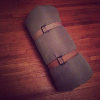sing
A sing is another way of referring to something as formal as a Navajo healing ceremony, as well as something as intimate as an individual prayer, because the use of songs or chants is a central element of Navajo spirituality. There are nearly 100 Navajo healing sings of varying range and intricacy, each originating from the Navajo Creation Story. These formal sings are so nuanced and complex that a Navajo singer, also known as a hataałii, learns only one or two sings over many years of apprenticeship. Sings can last anywhere from one to nine days and can include chants, songs, prayers, lectures, dances, sweat baths, the use of prayer sticks, and the creation of sand paintings. Of course, prayers and observances that are sung by individuals on a daily basis might last only a few seconds and involve merely the ability to observe, appreciate, and maybe sprinkle a few grains of corn pollen.
Other Native American traditions also have ceremonies, traditions, and healing practices in which songs are significant components. Hillerman mentions Hopi singing in some of his novels, for example. The Hopi believe strongly that these dances and songs, when combined in the proper way, work to give them a good life full of rain for agriculture and therefore success and prosperity for the people.










